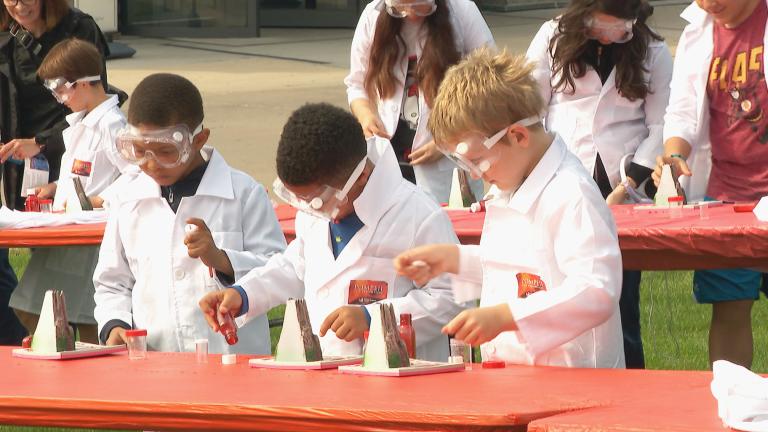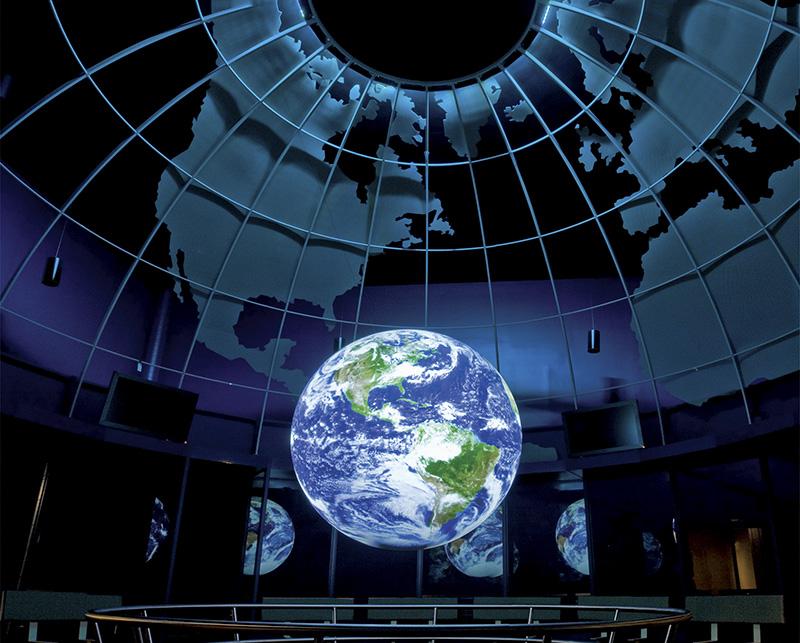 Chicago teens could become the youngest researchers to ever use NOAA's Science on a Sphere technology at the Museum of Science and Industry. (J.B. Spector / Museum of Science and Industry)
Chicago teens could become the youngest researchers to ever use NOAA's Science on a Sphere technology at the Museum of Science and Industry. (J.B. Spector / Museum of Science and Industry)
With rising waters, thinning ice caps and warmer temperatures recorded around the globe each year, future generations may be left to find solutions for Earth’s growing climate change concerns.
To get children and teens interested in science, technology and engineering careers, Chicago’s Museum of Science and Industry is planning a new program examining the world around us and the role of humans in it. Students from across the city will work on the Teen Advocates for Community and Environmental Sustainability (ACES) project over the next three years, using museum resources to look at global hazards like severe weather and temperature extremes, and analyze the impact of the Great Lakes on Midwestern climate.
“We want to establish a series of courses that are built into our youth development programs that get high school kids to not only learn about the science related to environmental issues, climate change, sustainability, resiliency – those types of topics – but we also want to help them develop the communication skills so that they have the ability to become advocates within their own community,” said Bryan Wunar, the museum’s director of community initiatives in its Center for Advancement of Science Education.
The museum last month received a $500,000 grant from the National Oceanic and Atmospheric Association to begin research using “Science On a Sphere” technology – a 68-inch Earth-like sphere that allows researchers to use real-life environmental data sets to create various visualizations.
Three cohorts of 30 public and private school students will use that technology to delve into environmental issues facing the Midwest, and eventually communicate and spread that information to the public.
“So they have a chance to teach all of the people who will be coming to the museum about environmental science,” Wunar said, “and to help them think about ways they might be able to make personal choices that help to improve the environment and to reduce their impact on the environment.”
Though Science On a Sphere models have been around for more than a decade, Wunar believes this project could be the first time teens are able to work hands-on with the technology.
The students will begin working with the museum next semester. By next summer, Wunar expects the first group of teens will already be piloting public demonstrations at the museum.
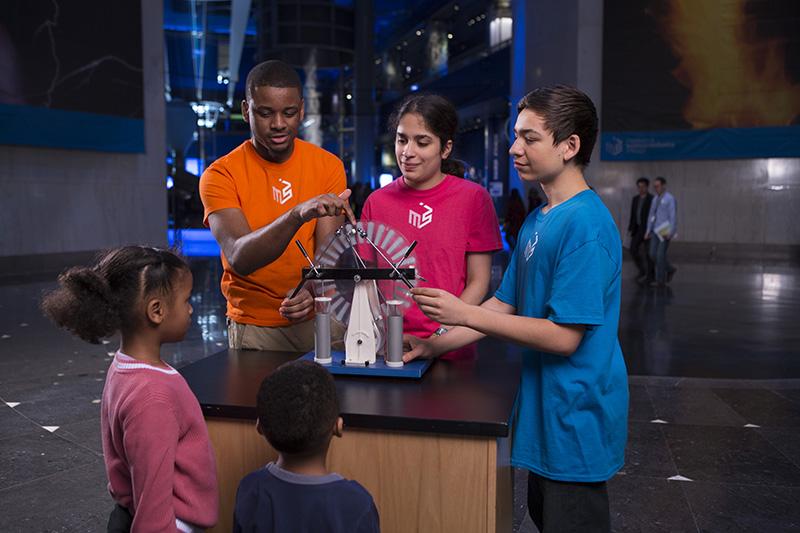 Once teens complete the NOAA program, they'll be able to work with the museum to demonstrate their results to the public. (J.B. Spector / Museum of Science and Industry)
Once teens complete the NOAA program, they'll be able to work with the museum to demonstrate their results to the public. (J.B. Spector / Museum of Science and Industry)
In all, the NOAA doled out $2.5 million in education literacy grants to the Museum of Science and Industry and four other projects focusing on “critical natural hazards and stresses facing these communities, including sea level rise, severe storms, drought, and extreme heat,” according to an administration press release.
The other areas participating in the grant program are mainly coastal regions that have faced significant weather and environmental issues.
Students affected by the rain and winds of Hurricane Sandy in Brooklyn will explore how climate change and extreme weather affects the vulnerability of their schools and neighborhoods. The Maritime Aquarium in Norwalk, Connecticut, will teach students from 10 nearby towns impacted by severe weather about environmental hazards and community resilience.
But Chicago’s project will look specifically at the Midwestern climate, according to Wunar, and the role of the Great Lakes within it.
“I think that helped position the content to be not just sort of a general global perspective,” he said. “We do want to take that perspective as well, but we thought we could really tailor it to things that are very specific to living in the Midwest that oftentimes we don’t think about because they are so regular to us, or things that we haven’t considered because we don’t necessarily have those extreme events like hurricanes, for example.”
The grant announcement came about a month before National Geographic’s release of “Before the Flood” – a 95-minute documentary featuring actor Leonardo DiCaprio exploring the already visible effects climate change has had on our planet.
Since the film’s release on YouTube on Sunday, it has already been viewed more than 4 million times.
“We’ve done a really good job of creating an impact on the environment, but we’ve done a very poor job of trying to adapt to it and create solutions and I think now is a very critical time,” Wunar said. “(The next generation) is the future and I think they’re the ones we’re going to have to look to to make the biggest impact.”
Rank of the top five warmest years on record. "Anomaly" refers to how far an observed temperature is above the long-term average. (NOAA – National Center for Environmental Information)
September 2016 was Earth’s warmest month on record, according to NASA's Goddard Institute for Space Studies. That’s been a recurring theme over the past year, as 11 of the last 12 months have had the highest average temperature, putting this year on pace to be the warmest in more than 130 years of record keeping.
The current record holder for warmest year on record: 2015. The second warmest? 2014. In fact, each of the 16 warmest years on record have occurred since 1998.
Wunar hopes projects like the one undertaken at MSI help expand the role museums play in getting teens invested in taking up globally relevant causes going forward.
“I think the younger generation, they’re the ones that we’re leaving the problems to solve,” he said. “So getting them to be developing those practices that scientists and engineers use to help them think like scientists is going to be really critical for them to take no finding solutions to climate challenges.”
Follow Matt Masterson on Twitter: @ByMattMasterson
Related stories:
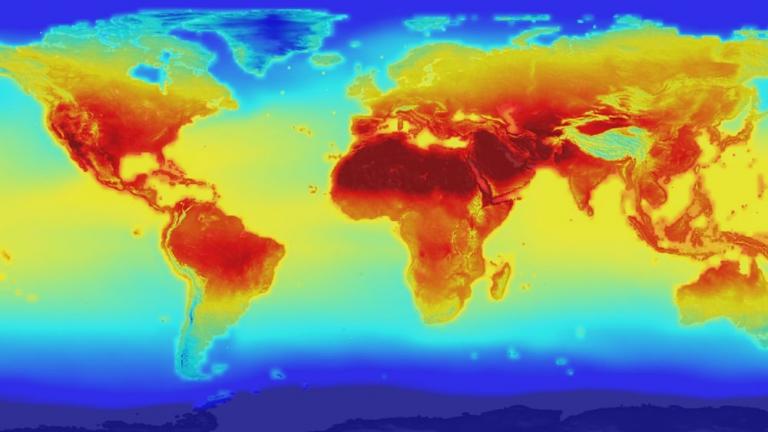 NASA: August Ties with July as Hottest Month on Record
NASA: August Ties with July as Hottest Month on Record
Sept. 13: The average global temperature in August tied with July as the hottest month since record keeping began in 1880, according to NASA.
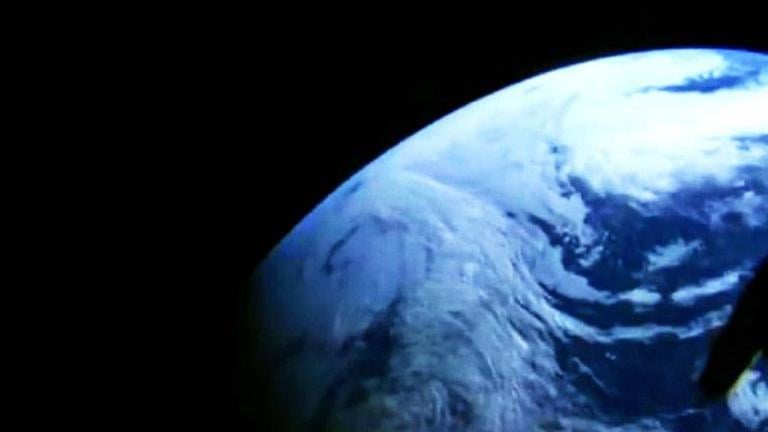 Doomsday Clock Remains 3 Minutes to Midnight
Doomsday Clock Remains 3 Minutes to Midnight
Jan. 28: It’s 2016 and we’re still three metaphorical minutes away from global doom. The Bulletin of the Atomic Scientists say global warming and nuclear weapon proliferation pose serious threats to mankind.
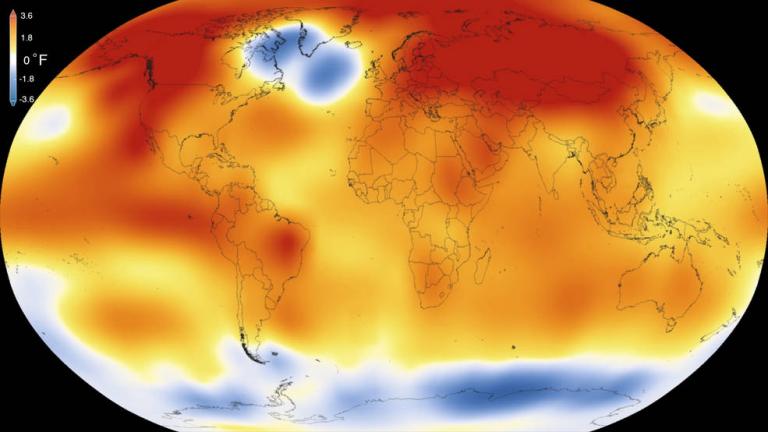 2015 Was the Hottest Recorded Year on Earth
2015 Was the Hottest Recorded Year on Earth
Jan. 20: New reports show that Earth’s surface temperature last year was its highest since modern temperature record keeping began in 1880. The global record was also broken in 2014, although 2015 saw dramatic increases by comparison.




